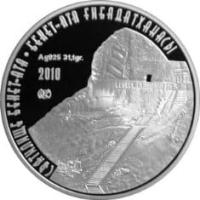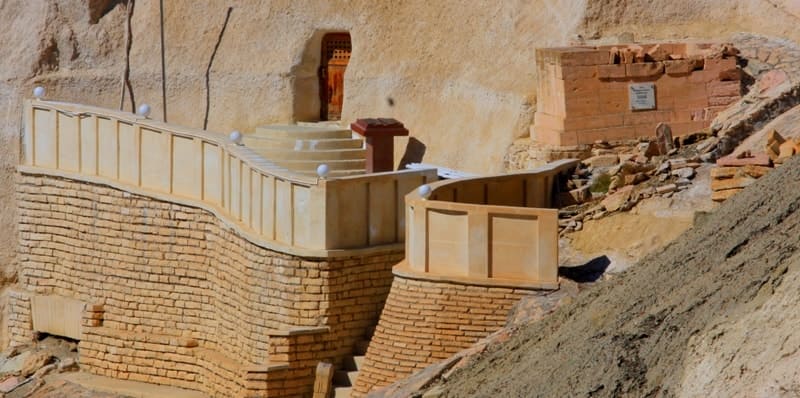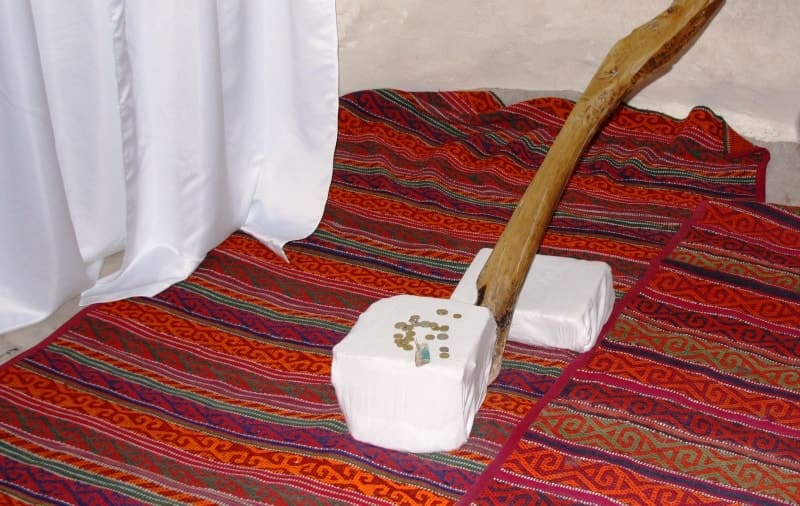You are here
Beket ata mosque.

Silk Road Tours to Mangistau.
"Yes friends, hear my covenant.
On that I went underground at sixty-three.
When I ascended, my spirit looked around the Prophet.
On that I went underground at sixty-three”
Hikmets of Khoja Ahmed Yassawi.
Itineraries in Kazakhstan.
Underground mosque Beket ata is located in Oglandy valley in eastern, lower, central part of Western cliff of Ustyurt plateau, 1.1 kilometers to west east and slightly south of Oglany ata necropolis, 18.5 kilometers to north and slightly west of Boszhyra valley, 54.7 kilometers to east and slightly north of underground mosque Shopan ata, 102 kilometers (in a straight line) northeast of town of Zhanaozen in Karakiya district, in southeastern part of Mangistau region.
The underground mosque Beket ata was built near an old well on one of the ancient routes of nomadic migrations and the movement of trade caravans.
Distances to Beket ata mosque:
Aktau - Beket ata mosque - 284 km
Zhanaozen - Beket ata Mosque - 134 km
Shopan Ata Mosque - Beket ata Mosque - 69 km.
The mosque is an artificial multi-chamber cave, arranged in chalk outcrops of rocks. The mosque is cut out in the middle tier of a high cliff, descending in ledges into a deep ravine, densely overgrown with bushes. Narrow and steep steps lead to a small platform arranged in front of the entrance to the mosque.
The mosque consists of six chambers. The main room of the mosque is round in plan, about 4.5 meters in diameter. The ceiling has the shape of a flat dome. In general, the interior imitates a Kazakh yurt. Narrow and steep steps lead to a small platform arranged in front of the entrance to the mosque.
The section of the rock in which the entrance opening - the hole - is cut out is reinforced with a retaining wall. The first room is a vestibule, which is illuminated by a deep skylight, pierced in the center of the domed ceiling. A wooden pole is installed here.
On the western side of the vestibule there is a prayer room with a mihrab in the southern wall, and on the south-eastern side there are two rooms, in one of which Beket ata is buried. On the western side, a semicircular room adjoins it, in which the floor level is raised like a sufa behind the corner pylons.
Apparently, this room was intended for pilgrims to rest. On the northern side, the hall is connected by a wide passage with a third room, no less large. The purpose of this room is not entirely clear. It could have been either an additional area for the prayer hall or a storage room.
The walls and ceiling of the latter collapsed, and fragments of tombstones were found on the floor. The walls of all the rooms of the mosque are smoothly hewn and have no traces of decorative design, with the exception of shallow niches for lamps.
The floors in two rooms are leveled. Strengthening the entrance part of the retaining wall and the deep foundation of the rooms ensured the safety of this mosque, unlike other underground mosques. The neat contents show that the local population protects this monument.
In 1999 - 2000, specialists from "Mangistaurestavratsiya" carried out restoration work. The roofs and walls were strengthened. A platform of shell rock was built in front of the entrance, the narrow and steep steps were landscaped, and benches were placed in places.
Platforms with benches were built around the springs. In 1982, by the decision of the Council of Ministers of the Kazakh SSR, the underground mosque Beket Ata (in the Oglandy valley) was accepted for state registration and protection of local significance, and in 2000, by the decision of the Prime Minister of the Republic of Kazakhstan with amendments, it was transferred from local significance to republican significance.
Geographic coordinates of underground mosque Beket ata: N43 ° 35'49 E54 ° 04'12



Authority:
Otynshy Koshbayuly, Murat Kalmenov. "Underground mosques of Mangistau". Olketanymdyk bassylym. Almaty, Publishing house "Orkhon". 2009. 160 p.
Alexander Petrov
photos by.







